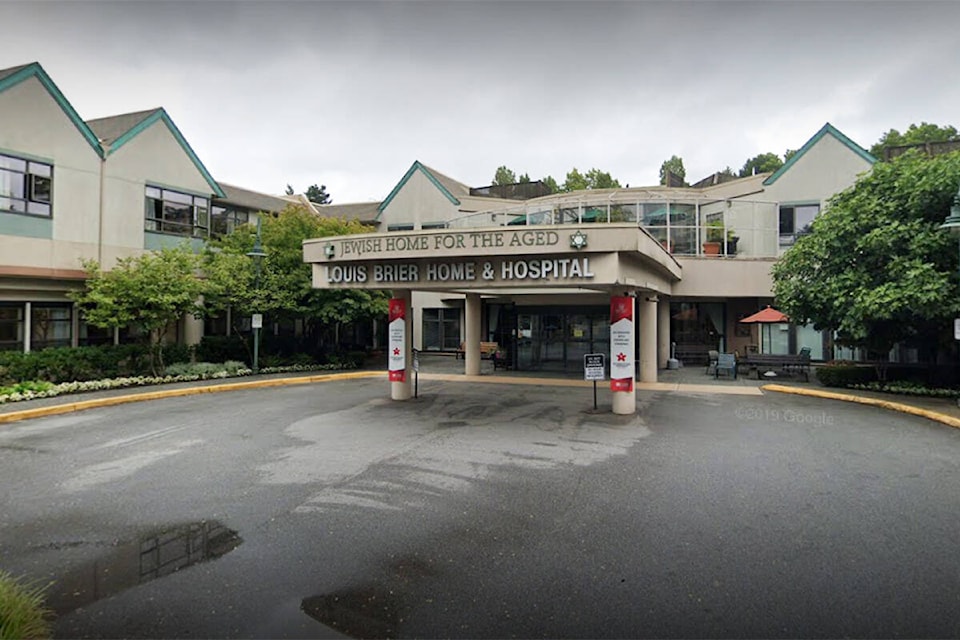The province needs to improve long-term care safe staffing guidelines and family involvement in pandemic-strategy decisions, according to a report from University of British Columbia researchers and the BC Care Providers Association.
Roughly 85 per cent of COVID-19 deaths in Canada took place at long-term care homes during the first wave of the pandemic, according to the report.
The study co-leads said to prioritize the report91¬„¡ƒ ”∆µôs recommendations about reviewing safe staffing levels and contingency staffing plans for times of crisis. While the province is not recording the same number of deaths and new infections as it once was, the report was made to solve problems in long-term care to prepare for unforeseen events in the short-term and long-term.
Currently, one nurse could be responsible for a range of 20 to 40 residents, and this longstanding problem was made worse by the pandemic increasing workloads, UBC nursing school professor and study lead Farinaz Havaei told Black Press Media.
91¬„¡ƒ ”∆µúOne of the recommendations that is probably key, there is a relatively urgent need to re-evaluate the staffing requirements 91¬„¡ƒ ”∆µî the hours of care per resident per day requirements 91¬„¡ƒ ”∆µî for the sector in light of some of these changes in the context of the pandemic.91¬„¡ƒ ”∆µù
Currently, provincial guidelines say each long-term resident should have 3.36 hours of direct care each day.
Study co-lead and care home CEO David Keselman said a safe staffing re-evaluation is long overdue. Long-term care was an undesirable place to work when he became a nurse almost 30 years ago, because nurses had too many residents to care for at once.
Residents91¬„¡ƒ ”∆µô needs became more complex during the last decade, and during the pandemic 91¬„¡ƒ ”∆µî yet staffing levels never adapted to the new realities of care, he said, adding that long-term care professionals knew the system was not crisis-ready before and during the pandemic.
91¬„¡ƒ ”∆µúWhy are we all surprised that what happened during the pandemic really happened? We were not prepared. And we are still not prepared,91¬„¡ƒ ”∆µù Keselman said.
91¬„¡ƒ ”∆µúNow there is either going to have to be a commitment to fix it, or some might say, 91¬„¡ƒ ”∆µòwe cannot do anything about it, it costs too much money.91¬„¡ƒ ”∆µô Then don91¬„¡ƒ ”∆µôt be surprised when the next pandemic hits and you have terrible outcomes again.91¬„¡ƒ ”∆µù
Although Keselman was not optimistic about a quick increase in staffing, he is hopeful that the guidelines and standards for staffing will change now that more people understand why it is important to review.
The recommendations outlined in the report are actionable and some care homes are testing out solutions already.
91¬„¡ƒ ”∆µúThere is a group of us working on this91¬„¡ƒ ”∆µ¶ These are not recommendations that are just going to be lost,91¬„¡ƒ ”∆µù Havaei said.
Canada91¬„¡ƒ ”∆µôs public health agency rolled out pandemic management strategies for long-term care over the past two-and-a-half years. These strategies did a good job of preventing COVID-19 deaths, but had some unintended consequences, the report found.
For residents and their families, the biggest issue was not being consulted about the pandemic management strategy including visitation policies, according to the study.
Increased consultations with Resident and Family Councils could improve the situation, and the health ministry could create province-wide association of the Councils to advise on pandemic policies going forward, Havaei said. Resident and Family Councils are working groups of residents and relatives of residents, who mainly communicate about concerns and work on projects to improve residents91¬„¡ƒ ”∆µô lives.
Keselman said the other observations and priorities in the report also match what he observes daily.
Recommendations by experts, advocates
The report makes recommendations about six topics, including staffing, workplace support, communication, visitation, infection control, screening and infrastructure.
Some may take longer to roll out than others, Havaei said, such as changes to facilities, which can be costly. However, more mental-health resources for long-term care nurses and managers could be created relatively quickly, they added.
The report also recommends increasing the number of mental health interventions available to long-term care staff, while improving working conditions 91¬„¡ƒ ”∆µì in which the biggest barrier to implementing each of the solutions is limited resources, Havaei said.
For the study, Havaei91¬„¡ƒ ”∆µôs team put together an advisory group made up of voices from the health ministry, the BC Care Providers Association, long-term care facilities as well as residents and their families.
The study brought information forward from a long-term care provider survey to discussion forums with representatives from health-care authorities, which was revised in a virtual meeting with the advisory group and health-care providers.
In an emailed statement to Black Press Media, the health ministry said it increased investments in health-care worker education, recruitment and retention since the province announced a recruitment initiative in September, 2020. That inititaive filled 7,000 health care professional positions in the senior sector, with over 1,500 of these jobs supporting safe visitation.
The health ministry also said this year91¬„¡ƒ ”∆µôs budget allocated $25 million to train long-term care assistants, following a $75-million investment into these programs last year. Last year, the province also allocated $585 million over a three-year period to the Health Career Access Program, which provides paid employment and health-care assistant training for people with no health education.
The can be found on the BC Care Association91¬„¡ƒ ”∆µôs website.
Like us on and follow us on .



